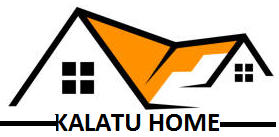Laser cleaning technology serves as an essential tool which brings substantial impacts to various industrial sectors. Traditional industrial cleaning methods are receiving major competition from this innovative technology because it allows businesses to remove rust along with paint and contaminants more effectively and cost-efficiently than previously possible.
So, what is laser cleaning? Laser cleaning utilizes concentrated laser beams to eliminate unwanted surface materials including rust and dirt together with paint and coatings from any material surface. The cleaning process known as laser cleaning avoids abrasion during execution through its non-contact method while maintaining an environmentally friendly status.
The cleaning procedure functions through laser beam focusing on a material surface to create the effect. The laser beam energy performs both evacuation and removal operations on surface contaminants while preserving underlying materials. The precise nature of laser cleaning makes it an ideal solution which works best when applied by sectors needing both accuracy and minimal impact on surfaces.
Major Business Advantage of Laser Cleaning
Business operations benefit substantially through laser cleaning technology because it leads to both material cost reduction and expedited production times. Here’s how:
Reduces Downtime
Companies face tremendous pressure from maintenance and cleaning operations that require stoppages to perform their duties. Sandblasting along with chemical cleaning methods require long setup periods before involving extensive dry times. The procedure of laser cleaning operates as an instant dry method which eliminates the need for extended setup periods or drying times. Laser cleaning enables companies to perform cleaning and maintenance operations alongside production since this eliminates the need for maintenance stoppages with prolonged equipment offline time.
Reduces Labor Costs
The performance of manual cleaning tasks demands numerous workers while taking an extended amount of time to complete single maintenance tasks. Laser cleaning operates either as a semi-automated system or an automated one which minimizes the need for manual labor hours. Such wage savings benefit the company by enabling them to direct their employees toward important tasks where they can enhance operational efficiency.
Eliminates Use of Consumables
Traditional cleaning processes depend mostly on costly materials like abrasive substances and chemicals as well as solvents. Economic expenses occur when these accumulations become subtracted from company assets. The process of laser cleaning functions without consumables because laser energy serves as its cleansing power. The system reduces costs and removes the costs associated with hazardous waste management and storage.
Lengthens Equipment Lifespan
Active cleaning practices involving sandblasting produce equipment deterioration which adds both maintenance expenses and replacement costs. Using lasers to clean objects extends equipment lifespan while maintaining equipment quality because there is no abrasion during the process and this ultimately reduces costs for repairs and replacements for businesses.
Environmentally Friendly and Regulatory Compliance
Several industrial sectors must follow specific environmental standards when disposing hazardous waste substances and managing chemical pollutions. Companies that use traditional cleaning procedures with solvents and chemicals will face difficult disposal restrictions that result in elevated operating expenses. There is no chemical waste production with laser cleaning so companies use this environmentally friendly method to obtain sustainable targets while staying compliant with regulations.
Laser cleaning equipment provides firms with an opportunity to boost operational efficiency and minimize costs without sacrificing product quality. The growing adoption of modern laser cleaning technology will lead to higher business productivity and sustainability as well as increased profitability.

